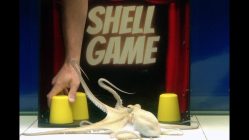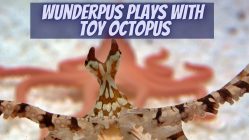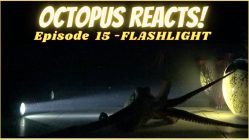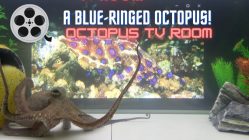In British Columbia, there are many crab fisherman. You will see them on their boats dropping their crap cages and reeling them in full of crabs. Every now and then, however, a crab fisherman will reel in a cage that is empty or full of crab scraps.
Who could be poaching their catch?
This video provides excellent footage of the culprits. In this case, a smaller and younger giant Pacific octopus.
The ability of octopuses to accomplish this sort of feat demonstrates how agile and highly intelligent these creatures are. Crab cages are simple wire baskets with a large opening which allows crabs to walk in. Crabs, not being very smart, walk-in but cannot figure out how to walk back out from the same large opening that they used to enter.
As the octopus in the video demonstrates, this is like somebody leaving a large takeout order on your doorstep. The octopus enters the crab cage, has his feast, and then — being unbelievably smarter than a crab — is able to figure out how to exit the cage.
Even as the crab fisherman is pulling up the crab cage, the octopus does not panic. It calmly and purposefully squeezes out of the opening and returns to his normal day.
If you look closely at the underwater footage on the video, you will spot many crab shells scattered throughout the seafloor. The narrator goes as far as accurately describing it as a “crab graveyard.” Those shells are not there because crabs have chosen that place as a destination to go and die. Those shells are there because crabs are one of the favorite foods of the giant Pacific octopus. You might say that the giant Pacific octopus can be a bit of a litterbug after it eats. At least crab shells are biodegradable.
Whether it is by hunting them in the wild or poaching them from crab fishermen, the octopus is very effective at keeping itself well fed.











